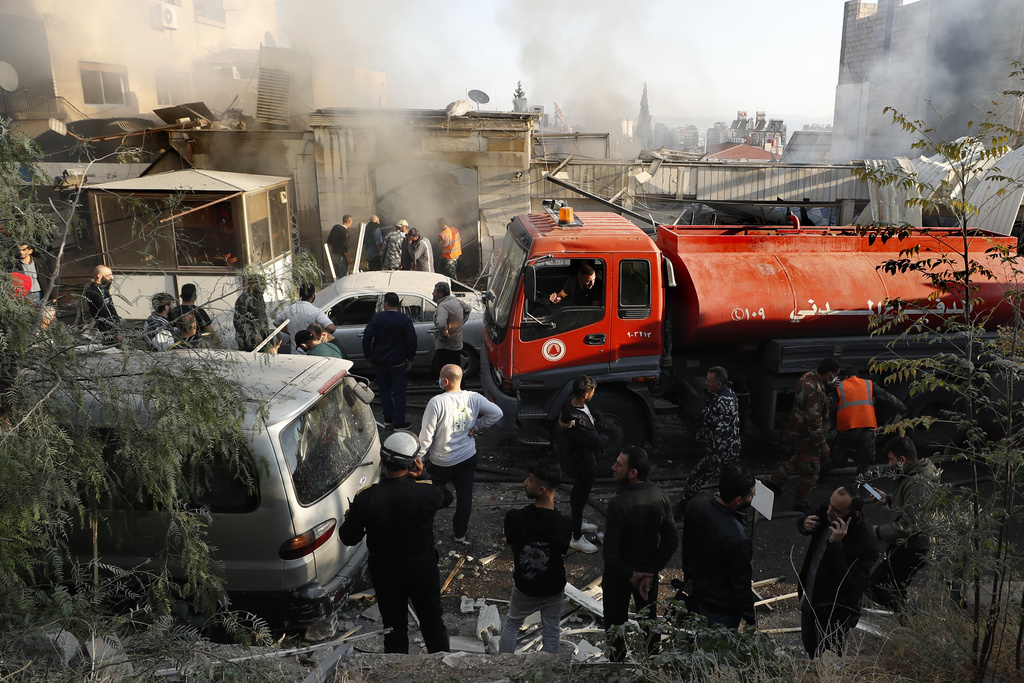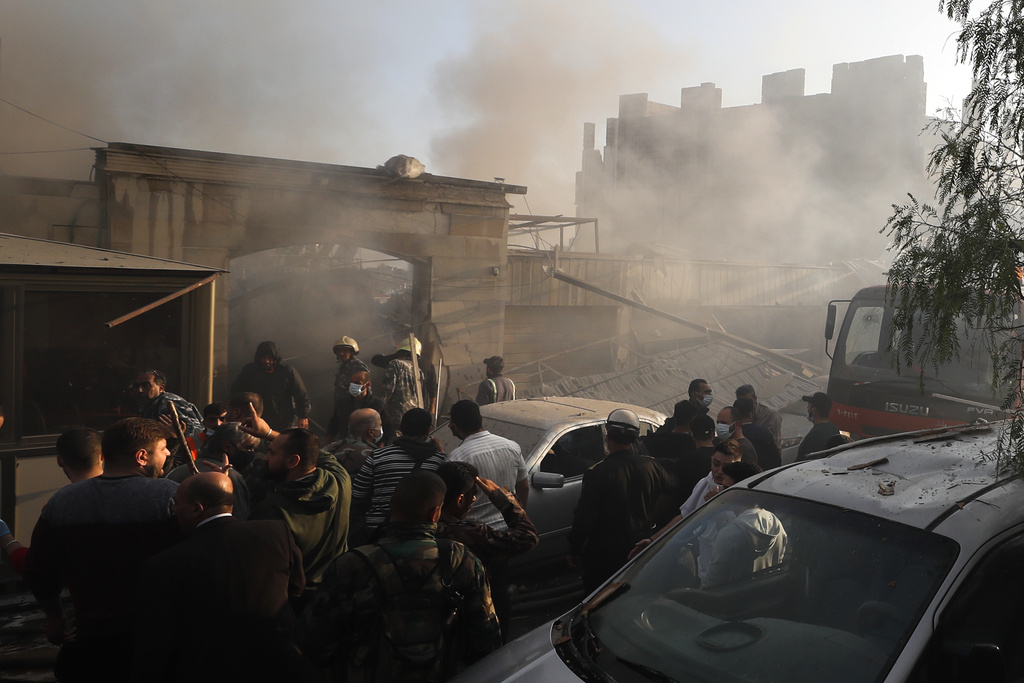Israel Escalates Airstrikes in Syria and Lebanon Conflict \ Newslooks \ Washington DC \ Mary Sidiqi \ Evening Edition \ Israeli airstrikes struck Damascus and Qudsaya in Syria, killing 15 and wounding 16, while targeting Islamic Jihad positions. In Lebanon, Israeli strikes in Baalbek killed nine as military campaigns intensified. The broader Israel-Hamas conflict continues to fuel regional instability, claiming over 43,000 lives in Gaza, displacing millions in Lebanon, and drawing in actors like Hezbollah and Iran. UN peacekeeping forces remain in Lebanon despite mounting border violence.

Israel Expands Airstrikes in Syria and Lebanon: Quick Looks
- Syrian Targets: Damascus’ Mazzeh neighborhood and Qudsaya suburb hit, killing 15 and damaging buildings.
- Islamic Jihad Focus: Israel claimed significant disruptions to Islamic Jihad’s command operations.
- Lebanon Airstrikes: Baalbek strikes killed nine, as Israeli military escalates attacks on Hezbollah.
- Gaza Devastation: Over 43,000 Palestinians killed since October 7, mostly women and children.
- Displacement Crisis: In Lebanon, 1.2 million people displaced amidst intense air raids.
- UN Stance: UNIFIL peacekeepers remain active despite attacks and rising border tensions.
- Iran’s Role: Tehran continues to support Syrian and Palestinian factions, intensifying regional conflict.
Deep Look
The timing of these airstrikes is notable, occurring just before a meeting in Damascus involving Ali Larijani, a senior adviser to Iran’s Supreme Leader Ayatollah Ali Khamenei. Larijani was scheduled to meet Palestinian faction representatives at the Iranian Embassy in Mazzeh, underlining the intertwined nature of Iran’s involvement in supporting factions linked to the ongoing Israel-Hamas war.
The Israeli military justified the strikes as part of its broader campaign against Islamic Jihad, which it accuses of collaborating with Hamas in the October 7 attacks on southern Israel. These attacks killed over 1,200 people, primarily civilians, and saw 250 individuals abducted to Gaza. Israeli officials have vowed to target Islamic Jihad operatives “wherever necessary,” indicating a prolonged campaign across multiple theaters.
Spillover Into Lebanon
The Lebanese Health Ministry reported over 3,365 deaths and 14,344 injuries since hostilities escalated on October 8. The violence has displaced approximately 1.2 million people, creating a dire humanitarian crisis. Israeli military officials claim to have struck more than 300 targets in Lebanon in recent weeks, including 40 key sites in Dahiyeh alone.
Hezbollah’s involvement has exacerbated tensions, with the Iran-backed group firing rockets into Israel starting October 8 in solidarity with Hamas. Before the war’s intensification in late September, Hezbollah acknowledged losing nearly 500 fighters but has ceased releasing updated casualty figures.
Gaza’s Mounting Casualties and Destruction
The Israel-Hamas conflict has escalated into a broader regional war, with hostilities extending into neighboring countries and fueling tensions between Israel, Iran, and other regional powers.
Iran’s Pivotal Role
Iran has been a significant backer of both Syrian President Bashar Assad and Palestinian factions, including Islamic Jihad and Hamas. Tehran’s support for Assad since Syria’s civil war erupted in 2011 has included deploying military advisers and fighters, as well as providing billions of dollars in economic aid. Iran’s influence extends to Lebanon, where Hezbollah acts as a proxy force, challenging Israel’s military operations in the region.
Thursday’s airstrikes in Syria and Lebanon reflect the complex web of alliances driving the conflict. Israel’s targeting of Iranian-backed forces and infrastructure underscores the broader strategic dimensions of its campaign, which seeks to neutralize perceived threats on multiple fronts.
UNIFIL’s Role Amid Escalating Violence
UNIFIL operates along the Blue Line boundary, monitoring the conflict between Israel and Hezbollah. However, the mission has faced challenges, including deliberate destruction of observation equipment by Israeli forces and injuries to 13 peacekeepers during recent hostilities. Despite calls for UNIFIL to withdraw from border areas, Lacroix reaffirmed the mission’s commitment to its mandate under U.N. Security Council resolution 1701, which ended the 2006 Israel-Hezbollah war.
Lacroix stressed that any reduction in UNIFIL’s presence would jeopardize its ability to mediate and monitor a future ceasefire. However, the resolution remains only partially implemented, leaving room for continued hostilities.
Broader Implications
The escalating violence has displaced millions, devastated entire regions, and created a dire humanitarian crisis that demands urgent international intervention. However, diplomatic solutions remain elusive as both sides double down on military strategies.
The ongoing conflict underscores the urgent need for regional and global actors to address the root causes of instability and pave the way for long-term peace in the Middle East.
Israel Escalates Israel Escalates







